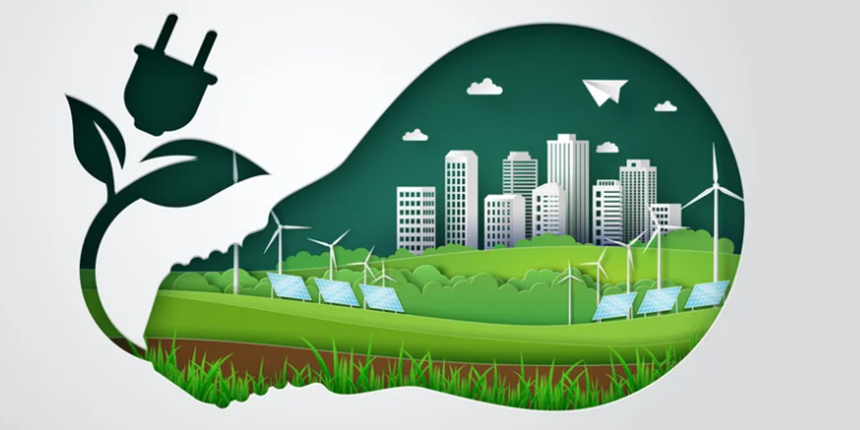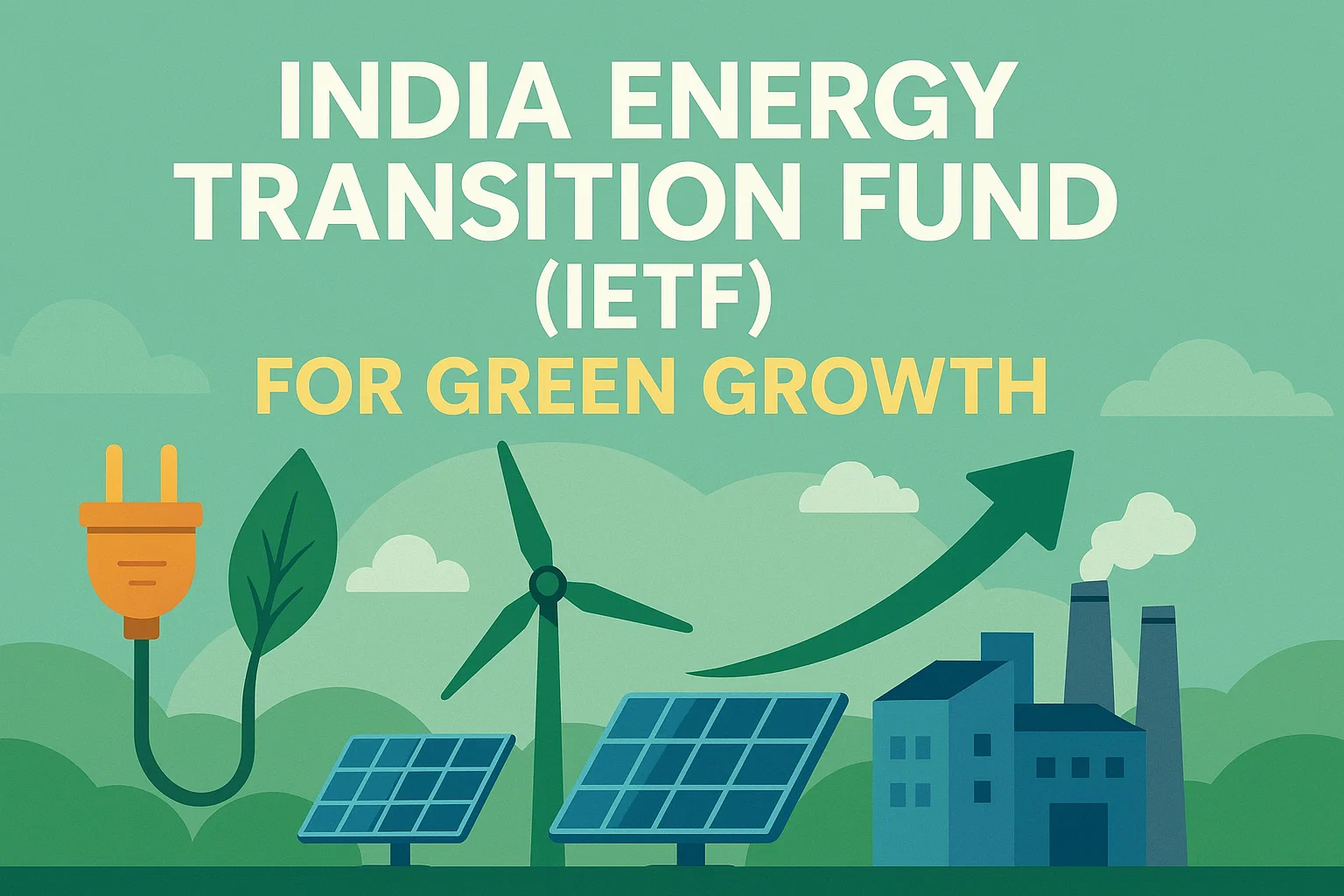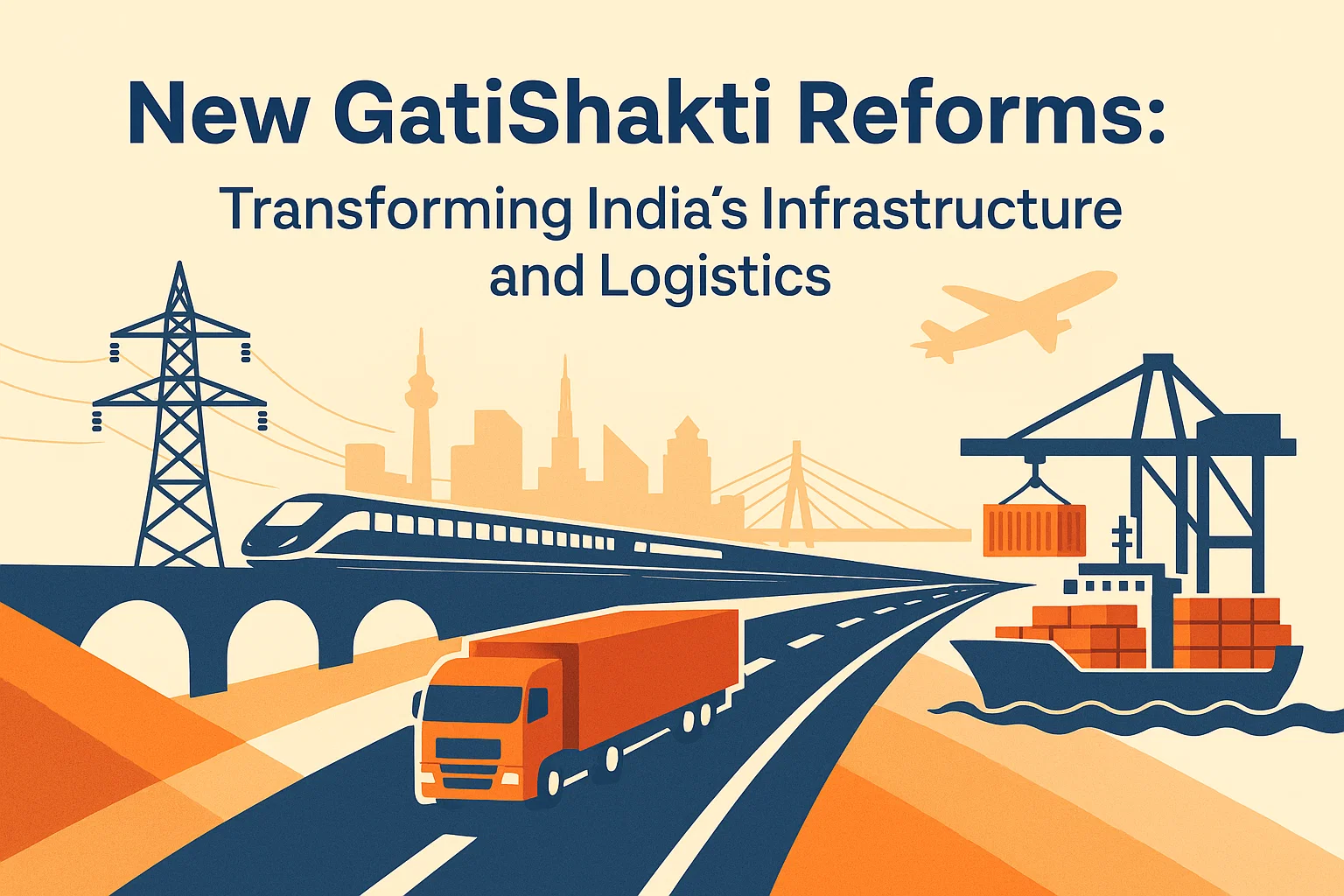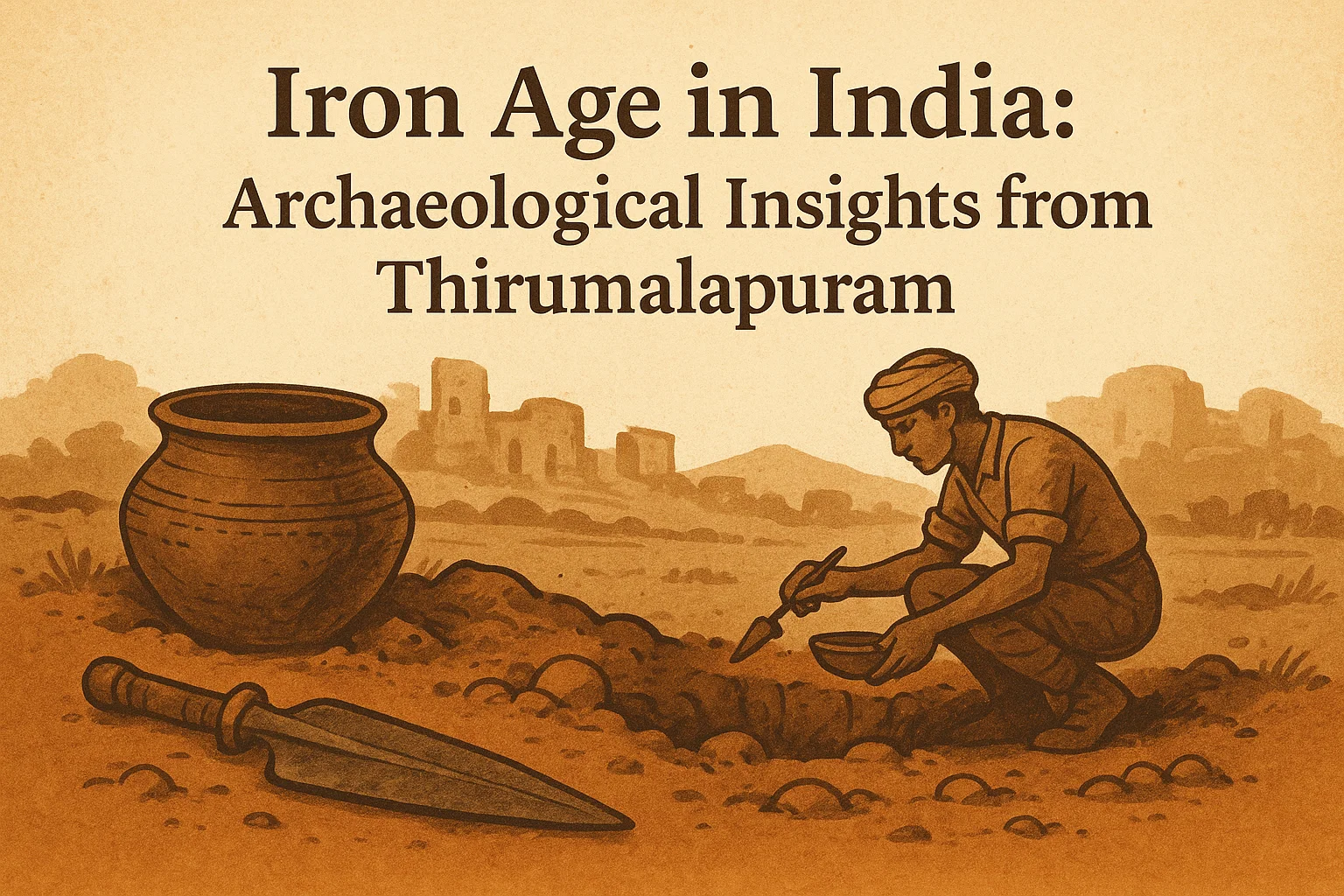Indian Cities at the Climate-Resilient Crossroads
India’s cities face floods, heat, and climate risks. Building resilient housing, transport, and services is key to a sustainable future.

Introduction
India is at a turning point. Its cities are growing at a speed never seen before. In just five years, they will create more than 70 per cent of new jobs. Within twenty-five years, close to one billion people will live in urban areas. This means cities will shape not only the economy but also the way people live, work, and connect. Yet this bright future is threatened by climate change. More floods, hotter summers, stronger storms, and water stress are already hitting India’s cities hard.
Auguste Tano Kouamé, Asmita Tiwari and Natsuko Kikutake remind us in “Building a City of the Future” (The Indian Express, 8 September 2025) that India has a narrow window to act. Two-thirds of the infrastructure that the country will use in 2050 has not yet been built. That includes 144 million new homes, countless kilometres of roads, and whole new systems for water, energy, and waste. How these are planned will decide whether India’s cities become engines of prosperity or centres of crisis. This essay brings together insights from research, reports, and case studies to argue that India must design cities that are climate-resilient, inclusive, and efficient. The time for delay is over; the blueprint for the future must be drawn now.
Urban Growth at Scale
The growth of Indian cities is enormous in both size and speed. By 2070, the population of urban India will be larger than the entire population of Europe today. To house these people, India will need to build more than 144 million new homes — more than twice the number that exists now. These homes cannot stand alone. They must be connected to hospitals, schools, power grids, clean water, and transport systems. The opportunity here is extraordinary: because so much remains unbuilt, India can avoid mistakes made elsewhere and get things right the first time.
But the challenge is also immense. Unlike countries that urbanised slowly, India is doing so in the middle of a climate crisis. Its cities must handle both expansion and adaptation at once. This is not optional. Without resilience, urban growth will mean more slums, fragile housing, and huge economic losses.
It is not only megacities like Delhi, Mumbai, and Bengaluru that matter. Much of India’s future will unfold in medium and small cities such as Nagpur, Surat, and Lucknow. These towns often lack strong planning systems but will absorb millions of new residents. Building resilience here — before sprawl and slums expand — is critical. Affordable housing, clean services, and compact development can help them avoid the mistakes of larger cities.
India can learn from abroad. Singapore has created water security with rain harvesting and desalination. Curitiba in Brazil has shaped growth around buses, making transport cheap and efficient. These examples show that careful planning can turn challenges into opportunities. But India must adapt lessons to its own diversity and scale.
Floods and Heat
Flooding is already one of the greatest threats to Indian cities. As wetlands and open spaces vanish under concrete, rain has no place to go. Surface flooding is now common, with economic losses estimated at $5 billion a year by 2030 and $30 billion by 2070. Mumbai’s 2005 floods, which dumped almost a metre of rain in a day, paralysed the city. Chennai’s 2015 floods killed hundreds and displaced thousands. Kerala’s 2018 disaster showed how floods can trigger disease outbreaks and long-term economic damage.
The old response of building only bigger drains or walls is not enough. Cities must adopt integrated flood strategies:
- Protect wetlands to absorb excess water.
- Mark no-build zones to stop construction in floodplains.
- Create green parks that double as water storage.
- Use permeable pavements that allow water to sink into the ground.
Some cities are moving in this direction. Kolkata has a flood forecasting system. Chennai is upgrading stormwater drains. Brazil offers inspiration, having shifted from concrete channels to nature-based flood control.
Heat is another growing danger. Cities are already 3 to 5 degrees hotter than their surroundings, even at night. This urban heat island effect is deadly, especially for outdoor workers, the elderly, and children. Ahmedabad’s Heat Action Plan shows what can be done: early warnings, cool roofs that reflect heat, tree planting, and changing work hours. Expanding such measures nationwide could save hundreds of thousands of lives and protect economic productivity during the hottest months.
Cyclones add yet another risk. Amphan in 2020 caused $13 billion in damages, much of it in Kolkata. Odisha has faced repeated super cyclones, hitting poor communities hardest. As storms grow stronger, India must invest in stronger coastal defences, reliable warnings, and, when needed, planned relocation of vulnerable populations.
Homes and Transport
Housing is at the centre of both opportunity and risk. Over half the homes that India will need by 2070 are still to be built. If these are poorly located or designed, millions will be trapped in flood zones, heat islands, or unstable land. But if they are planned well, they can form the backbone of resilient, fair, and thriving cities.
Compact housing — built close to jobs, schools, and transit — reduces sprawl and keeps services affordable. Transit-oriented development, already seen in parts of Delhi and Pune, helps people rely less on cars, cutting pollution and costs. On the other hand, unplanned sprawl forces people to live far from work, spend hours in traffic, and pay more for services.
Slums already house over 40 per cent of India’s urban population. These areas often sit on the most dangerous land, such as riverbanks or slopes. They lack drainage, water, and secure tenure. Climate risks hit them hardest, making inclusivity essential. Building affordable, disaster-safe housing with legal recognition is both a social justice need and a resilience strategy.
Transport is equally vital. A quarter of India’s urban roads already face flood risks. In some cities, if just 10 per cent of roads are flooded, half the network is paralysed. This stops workers from reaching jobs and goods from reaching markets. Solutions include flood-proofing key roads, improving drainage, building alternative routes, and strengthening materials. Metro systems in Bengaluru, Hyderabad, and Mumbai show that people are ready to use reliable mass transit when available.
Globally, Rotterdam shows how ports and transport networks can be protected against floods while keeping trade strong. India, with its vital port economy, must act similarly to safeguard its growth.
Nature and Services
Nature is not just decoration; it is infrastructure. Wetlands in Kolkata treat sewage and act as natural sponges. Mangroves around Mumbai shield the coast from cyclones. Biodiversity parks in Delhi clean the air and store water. Urban forests in Hyderabad lower heat and give people shade. These are “nature-based solutions” — cheaper and more flexible than concrete-only projects.
Waste and water services are equally central. Poor waste management clogs drains and worsens floods. Uncollected rubbish pollutes rivers. But with proper systems, waste becomes a resource. Waste-to-energy plants generate power. Composting reduces landfill and supports urban farming. Recycling creates green jobs. Hyderabad’s restoration of its lakes shows how waste and water management can revive whole ecosystems.
Nature and services together improve everyday life. Clean water reduces disease. Parks and trees improve mental health. Efficient services free women and children from the burden of carrying water or managing waste. In this way, resilience is not just about surviving disasters but also about building healthier, fairer cities.
Other countries show the value of this approach. China’s “sponge cities” soak up stormwater in parks and ponds. New York has restored wetlands to reduce storm impacts. These lessons confirm that working with nature strengthens resilience while improving urban life.
Governance and Costs
Good planning needs strong governance. Most Indian cities still lack clear climate strategies. Less than 10 per cent of urban plans mention climate change. Local governments often lack money, skilled staff, and real authority. Instead, different agencies control housing, water, and transport separately, making coordination weak.
Some cities show what is possible. Surat created a Climate Change Trust that brings together government, businesses, and citizens to prepare for risks. This kind of cooperation is a model for others.
Reform is urgent. Urban local bodies must be empowered with funds and authority. Climate cells can coordinate across sectors. Citizens should be involved through participatory planning, neighbourhood committees, and digital platforms. Without people’s support, resilience plans will remain on paper.
The price tag is large: about $10.95 trillion over the next thirty years. But this should be seen as an investment, not a cost. Every rupee spent can save four in avoided damages. Cleaner air and water, millions of new jobs, and more stable growth are the rewards.
Financing must be innovative. Municipal bonds can raise money locally. Land value capture can tax rising land prices near new projects. Green bonds can support renewable energy and clean transport. International banks and carbon markets can provide extra funding. But to unlock this, cities must show transparency, efficiency, and accountability.
Public-private partnerships will also play a key role. The private sector can bring innovation and efficiency, while government ensures fairness and long-term vision. Together, they can build the resilient cities that India needs.
Conclusion
India’s urban future will define its national future. Cities can become engines of prosperity, inclusion, and innovation — or they can collapse under floods, heat, and inequality. The choice depends on decisions made now.
Investments in compact housing, safe transport, modern services, and nature-based solutions will make cities more liveable and fair. Governance reforms must give local bodies the power to act, while people must be active partners in shaping their neighbourhoods.
The challenge is huge, but so are the rewards. India has the rare chance to build its cities in a climate-aware way, something no other large country has done before. If it succeeds, it can become a global leader in climate-smart urbanisation. The window of opportunity is narrow, but the blueprint for the future can and must be drawn today.
Subscribe to our Youtube Channel for more Valuable Content – TheStudyias
Download the App to Subscribe to our Courses – Thestudyias
The Source’s Authority and Ownership of the Article is Claimed By THE STUDY IAS BY MANIKANT SINGH




